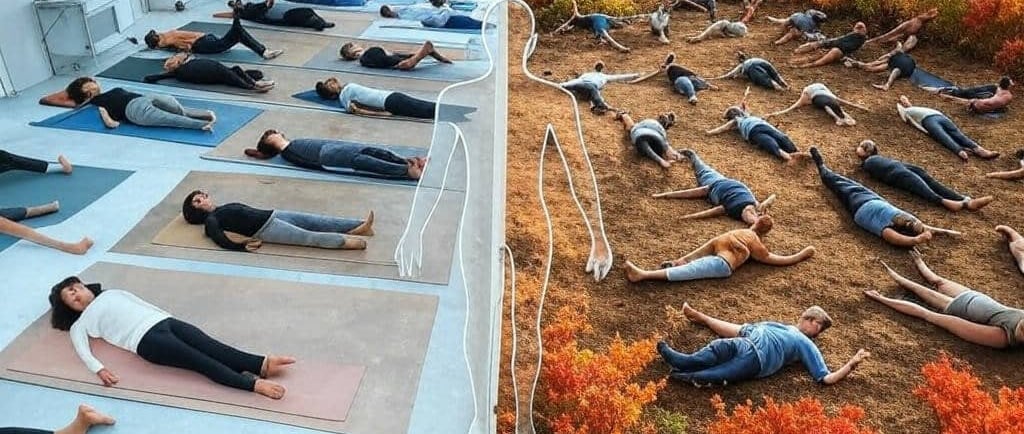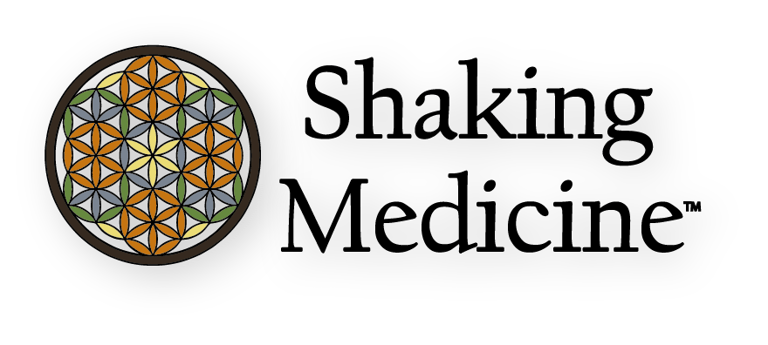Add your promotional text...
Shaking Medicine & TRE: Key Differences and Similarities
Explore the key differences and similarities of Shaking Medicine & Trauma Releasing Exercises (TRE). Learn about each approach and their methodology.
FOUNDATIONS
Dr Keith R. Motes
9/9/20256 min read


Shaking Medicine and TRE: Shared Roots in Therapeutic Tremoring
Shaking Medicine (SM) and Trauma Releasing Exercises (TRE) both harness the body’s natural therapeutic tremoring mechanism—a powerful tool for healing and wellbeing. They are two of very few modalities in the world that are centered on exploring neurogenic therapeutic tremoring at their core. We share a commitment to exploring spontaneous shaking safely and effectively for making the world a better place and helping people all over live more vibrantly. While we have this common ground, our approaches take distinct yet complementary paths, offering unique benefits for those seeking a TRE alternative.
What Makes TRE Unique?
Trauma Releasing Exercises (TRE) offers a structured method: six main steps designed to make therapeutic tremoring accessible to the mainstream. It focuses on the psoas muscle (the main fight, flight, freeze muscle), emphasizes exclusively a scientific lens, and follows their step-by-step protocol that practitioners adhere to. TRE focuses on one or very few therapeutic tremoring shapes, namely the butterfly and butterfly-bridge position on the back, aiming to get the tremors to move into and release the psoas and then travel through the sacrum and spine. This structure often appeals to the mainstream and those with chronic or extreme conditions like complex PTSD. TRE is very good at using this butterfly tremoring process to get into the psoas as that has been their sole focus! You can learn more about TRE on their home page here.


How Shaking Medicine Explores Therapeutic Tremoring
Shaking Medicine, by contrast, embraces a broader, more flexible approach. This modality began with Dr. Motes' unexpected spontaneous tremoring experience—a transformative moment that seeded this modality before he knew anything about therapeutic shaking. From there, Shaking Medicine grew by blending his embodied experience of this with his background and love for science and more spiritual practices of Yoga, Qi Gong and Chinese Medicine. Dr. Bradford Keeney's work was his first big outside source on the topic of spontaneous movement that inspired this modality bringing in indigenous wisdoms like that from the Kalahari Bushmen’s practices. Ongoing discoveries through embodying and teaching this modality continually evolve SM as it surely does with TRE as well.
Unlike TRE’s focus on one main therapeutic tremoring position on the back, Shaking Medicine offers dozens of possible shapes exploring tremoring positions from standing, all fours, belly, side, back, and more, moving tremors through the entire body and into each and every fiber creating a full body experience for holistic healing. By embracing many cultures and traditions SM has evolved into a creative style compared to TRE's more linear style. SM encourages their teachers to share in a creative way where every journey is unique while maintaining the foundations that keep the experience safe and effective and inviting in lots of curiosity, intuition, playfulness, and fun.
Who Do These Modalities Serve?
TRE often focuses on supporting people with heightened nervous system distress, such as war veterans or those with significant trauma, given their history of focusing on these groups with its more structured approach though it is certainly good for those in more average states of health too. Shaking Medicine meets people in these more extreme states though has had more of a focus on helping people in these more average states of health to access even more vibrant living. Many who join SM have done some healing work and use it to progress to a whole new level to release lingering stress, anxiety, or trauma, while also cultivating lots of energy to do the things they love to do in life and access their human potential. Both modalities offer value, with SM’s diverse therapeutic tremoring shapes and creative style complementing TRE’s more systematic simple approach.


Philosophy and Practice: TRE’s Structure vs. Shaking Medicine’s Flexibility
In Shaking Medicine, tremoring is a dynamic process that shifts with each person and moment. Our classes build on a safe, effective, and enjoyable foundation, encouraging teachers to innovate and create uniquely themed journeys using dozens of therapeutic tremoring shapes (standing, all fours, belly, side, back, and beyond). This contrasts with TRE’s more consistent step-by-step protocol, which uses a couple of tremoring shapes that tend to be quite similar to each other to ensure uniformity across teachers, catering to its specific audience. Shaking Medicine, under the Shaking Medicine Foundation in Australia (see our Foundations Blog to learn more), welcomes wisdom from all tremoring traditions, including TRE, Science, spiritual components, and evolves constantly, much like the tremors themselves.
We’ve outlined stages of embodiment—Beginner (experience it), Intermediate (make it second nature), Advanced (move into full homeostasis)—to guide people deeper. SM incorporates concepts like clearing our roots, intentional breathing to complement the experience, supporting the spine and core, and the ‘Bushman’s Pump,’ inspired by Dr. Bradford Keeney’s work with the Kalahari Bushmen, the oldest shakers on Earth and more.
What Practitioners Say About Shaking Medicine vs TRE
Practitioners trained in both TRE and Shaking Medicine often highlight SM’s creative freedom and full-body approach. They appreciate how SM’s dozens of therapeutic tremoring shapes engage more of the body compared to TRE’s single (or very few) psoas-focused butterfly shape, creating a richer experience. Many note SM’s less rigid, more inclusive philosophy, which feels free of restrictive frameworks sometimes found in TRE's practice and with what TRE's practitioners are allowed to facilitate. Both modalities connect us to this primal healing mechanism (making them very similar), evolved over billions of years to restore balance after stress or trauma, guiding us to freedom, presence, and resilience. Shaking Medicine encourages their teachers to grow into sharing their own unique style based on the foundations that keep therapeutic tremoring safe and effective and based on their unique skills and passions.


Which is Right for You? Shaking Medicine, TRE or both!
Shaking Medicine (SM) and Trauma Releasing Exercises (TRE) are two of the very few modalities in the whole world that explore therapeutic tremoring as their main focus. We deeply respect TRE and even collaborate with some of their practitioners, seeing it as a vital part of the global movement for healing through therapeutic tremoring. Some facilitators are trained in both and are sharing with their students/clients from the combined expertise of SM and TRE.
Shaking Medicine offers a unique, complementary approach, adding richness to what’s possible without diminishing TRE’s value. Curious about which is right for you? You can explore Shaking Medicine through our online courses, (7 day free trial), 1:1 coaching, find a SM teacher near you, or tune into any of our in-person classes, workshops, retreats or trainings.
Share your thoughts! Whether you’re from our Shaking Medicine Community, the TRE Community, or just curious, What are your thoughts about how Shaking Medicine & TRE compare?
Key Takeaways
Shaking Medicine vs TRE both use therapeutic tremoring. SM offers dozens of shapes to move the shaking all through the body.
TRE focuses on a structured, scientific approach with few shapes, often for trauma-focused audiences.
Shaking Medicine blends science, spirituality, and indigenous wisdom for a holistic and creative approach.
Both tap into nature’s primal healing mechanism of neurogenic therapeutic tremoring for resilience and trauma release.
Try Shaking Medicine via our online community and learn more about TRE here.
FAQ
What is the difference between Shaking Medicine and TRE?
Shaking Medicine offers many flexible and dynamic, full-body therapeutic tremoring shapes with spiritual & cultural depth, while TRE uses a structured step by step, psoas-focused protocol for trauma release.
Can Shaking Medicine complement TRE?
Yes, Shaking Medicine’s diverse tremor shapes enhance TRE’s approach, offering creative freedom for trauma release and vice versa.
Can I practice Shaking Medicine if I’ve done TRE?
Absolutely! They both focus on neurogenic therapeutic tremoring at their core. Shaking Medicine is a more creative style and has dozens of therapeutic tremoring shapes to explore moving the shake all through your body for deep healing.

